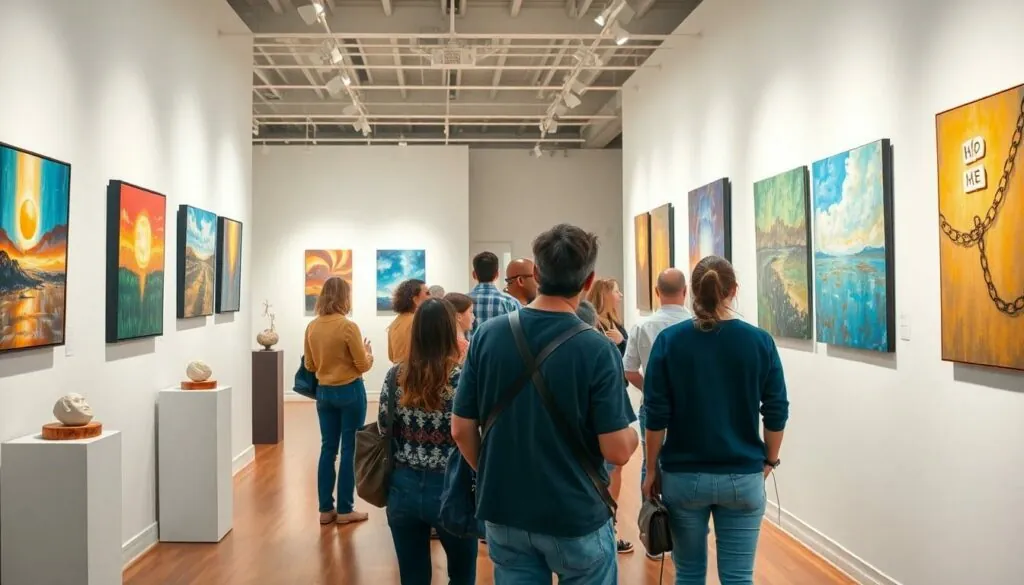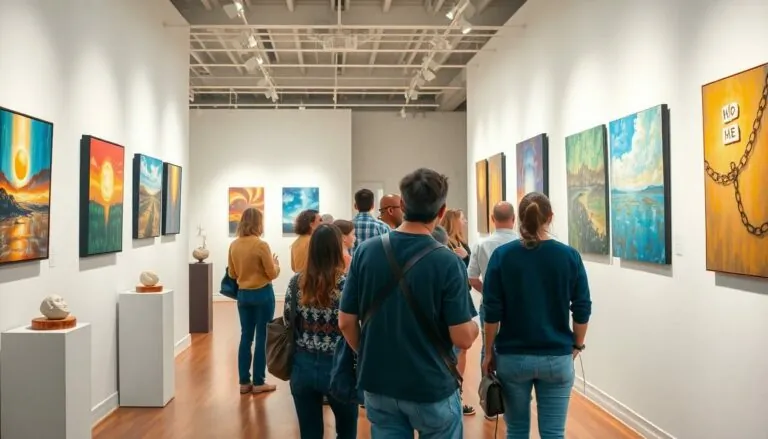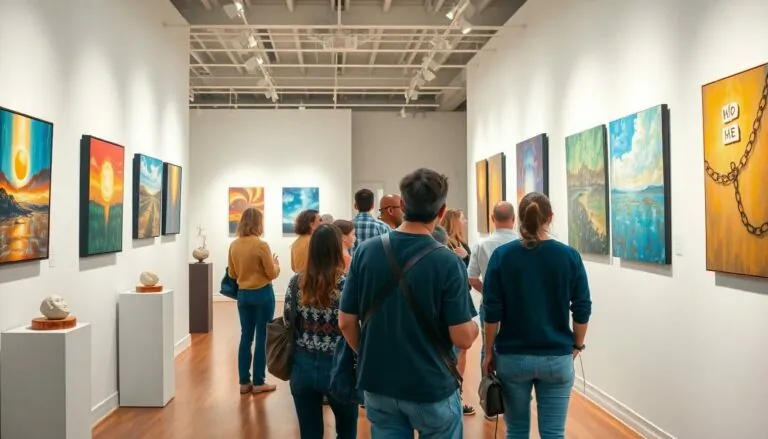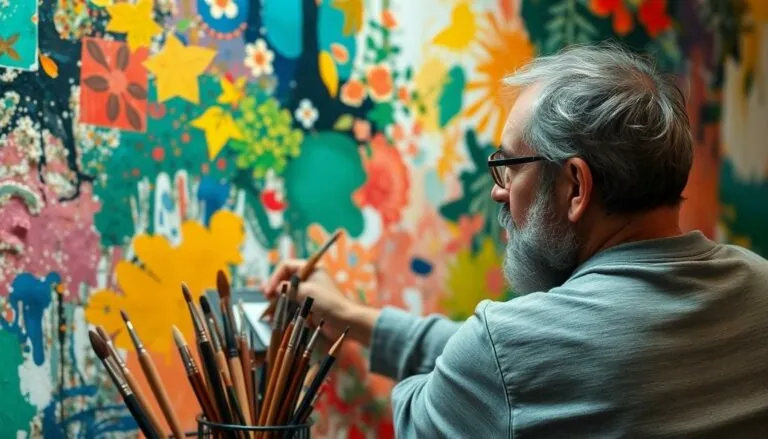Table of Contents
ToggleChristian modern art is a vibrant blend of faith and creativity that challenges traditional boundaries. It’s where paintbrushes meet prayers and sculptures echo sermons, transforming the way believers experience spirituality. While some might picture angels in gilded frames, today’s artists are breaking the mold, infusing contemporary themes with timeless truths.
Overview of Christian Modern Art
Christian modern art represents a vibrant intersection of faith and contemporary expression. This art form includes various styles and mediums such as painting, sculpture, and digital art. Artists today communicate profound spiritual themes through innovative techniques and materials. They often challenge traditional representations, focusing instead on narratives that resonate with modern audiences.
Themes within Christian modern art frequently address societal issues, spirituality, and personal experiences. Diverse perspectives appear in the work of artists who explore topics such as redemption, grace, and justice. These thematic choices reflect a dedication to relevance in today’s world.
Exhibitions of Christian modern art occur in galleries, churches, and public spaces, inviting wider engagement amongst viewers. Such settings provide opportunities for individuals to reflect on their beliefs and connect with others. Artists leverage social media platforms to reach broader audiences, fostering dialogue around faith and creativity.
Prominent figures in Christian modern art include Makoto Fujimura and Elsa Muñoz, who push creative boundaries. Their work emphasizes the importance of healing and transformation, often drawing upon their spiritual journeys. Many emerging artists seek to navigate the complexities of faith, encouraging viewers to find meaning in contemporary expressions.
The impact of Christian modern art extends beyond aesthetics. This art enriches spiritual conversations and offers fresh insights into age-old belief systems. Artists capture the essence of faith with authenticity while remaining relevant in a rapidly changing cultural landscape.
Historical Context
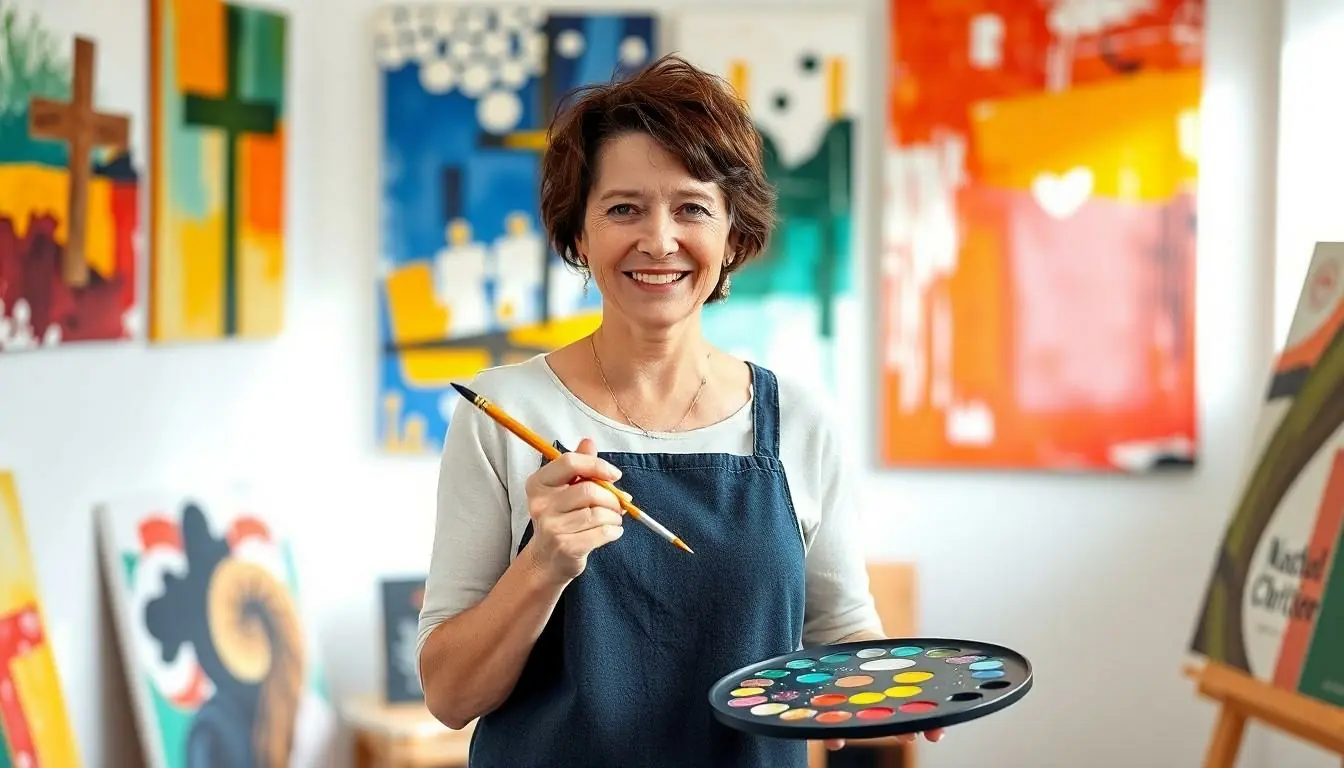
Christian modern art stems from a rich history that intertwines faith with artistic expression. This interplay reflects centuries of evolving beliefs and practices.
Evolution of Christian Art
Early Christian art featured intricate symbolism rooted in theology. Such art often depicted biblical figures and events in ways meant to communicate spiritual truths to an illiterate populace. The Renaissance period introduced a humanistic approach, emphasizing realism and emotional depth. In contrast, the 20th century saw a dramatic shift as artists began to explore abstraction and personal expression, moving away from strict narrative forms. Many contemporary artists now integrate diverse influences, including cultural and societal elements, reshaping how the divine is represented in modern contexts.
Influence of Modernism
Modernism disrupted traditional art norms, fostering innovation across various art forms. Movements like Cubism and Surrealism challenged artists to express complex spiritual ideas through new techniques. This encouragement toward experimentation enabled Christian artists to redefine sacred themes, incorporating elements that resonate with contemporary audiences. Influences of existentialism and postmodernism led to questioning established narratives, prompting artists to explore faith within personal and collective frameworks. The blend of modernism with Christian themes creates a unique dialogue that continues to evolve in today’s artistic landscape.
Key Characteristics of Christian Modern Art
Christian modern art embodies a unique blend of spiritual narratives and contemporary themes. Artists explore diverse expressions while maintaining a connection to faith.
Themes and Symbols
Themes often revolve around personal journeys, societal issues, and the quest for spiritual truth. Symbolism plays a critical role, where elements like light and darkness symbolize hope and struggle. Artists reinterpret historical icons, transforming traditional figures into reflections of modern dilemmas. Images of nature frequently represent creation and renewal, connecting viewers to profound spiritual experiences. Additionally, community-oriented themes explore connections between individuals and their faith, resonating deeply with contemporary audiences.
Techniques and Mediums
Techniques vary significantly among artists, who employ both traditional and innovative methods. Painting remains a popular choice, with techniques ranging from acrylics to watercolors, allowing for vibrant expressions of faith. Sculpture serves as another compelling medium; artists create installations that engage viewers physically and emotionally. Digital art gains traction, as creators utilize technology to craft interactive experiences that invite participation. Mixed media offers opportunities for experimentation, blending various materials to create layered meanings. Overall, these diverse techniques enhance the impact of Christian modern art and its ability to communicate complex spiritual concepts.
Notable Artists in Christian Modern Art
Various artists contribute to the evolving landscape of Christian modern art, blending faith and innovation in their work. Each artist presents unique perspectives that challenge traditional representations.
Contemporary Practitioners
Makoto Fujimura embodies a contemporary practitioner known for his use of traditional Japanese materials while addressing themes of light and hope. Elsa Muñoz explores personal narratives, infusing her creations with reflections on faith and community experiences. Other artists like Timothy Schmalz focus on sculptural works that engage the viewer on deeper emotional levels, inviting contemplation of spirituality in modern contexts. Collectively, these contemporary practitioners redefine the dialogue around faith and expression.
Influential Movements
Various influential movements shape Christian modern art, each leaving a distinct mark on the creative process. The Abstract Expressionist movement encourages artists to explore spirituality through color and form, emphasizing emotional resonance over literal representation. Minimalism contributes simplicity and clarity, allowing spiritual themes to emerge without distraction. Digital art movements enable new forms of interaction, connecting viewers through innovative technological mediums. Each movement provides valuable tools for artists, enhancing the ways in which faith is expressed in contemporary contexts.
Impact on Faith and Culture
Christian modern art profoundly influences both faith and culture by bridging spiritual themes with contemporary expression. It shapes believers’ experiences, encouraging deeper engagement with their spirituality. Diverse artistic styles resonate with audiences, making concepts of faith more accessible and relatable.
Artists often tackle societal issues through their work, sparking dialogue around moral and ethical questions. Themes like hope, struggle, and personal journeys frequently emerge, reflecting the complexities of modern life. Such narratives invite viewers to consider their own experiences in relation to spirituality.
Symbolism plays a key role in communicating complex ideas. Light and darkness frequently represent hope and despair, while natural imagery highlights creation and renewal. These elements connect believers to their faith, reinforcing a sense of community and shared values.
Art exhibitions, held in churches and public spaces, extend the reach of Christian modern art, allowing for contemplation and interaction. Social media serves as a platform for artists to engage wider audiences, facilitating conversations about faith and creativity. Individuals such as Makoto Fujimura and Elsa Muñoz lead this movement, using their platforms to promote healing and transformation through artistic expression.
Influential movements like Abstract Expressionism and Minimalism guide artists in exploring new avenues for expressing faith. Each approach enriches the dialogue around spirituality, offering diverse interpretations and encouraging innovation. Contemporary artists often respond to the cultural landscape, ensuring their work remains relevant and impactful. Christian modern art thus enriches faith conversations, revitalizing traditional beliefs and bridging gaps between generations.
Christian modern art stands as a powerful testament to the evolving relationship between faith and creativity. By blending contemporary themes with spiritual narratives, artists create works that resonate deeply with today’s audiences. This dynamic form of expression not only challenges traditional representations but also invites viewers to engage with their spirituality in new and meaningful ways.
As artists continue to explore innovative techniques and diverse mediums, the impact of Christian modern art expands beyond the canvas. It fosters dialogue around societal issues and personal experiences, enriching both individual faith journeys and communal connections. Through exhibitions and social media, this vibrant art form encourages a fresh understanding of spirituality, making it an essential part of contemporary cultural conversations.

